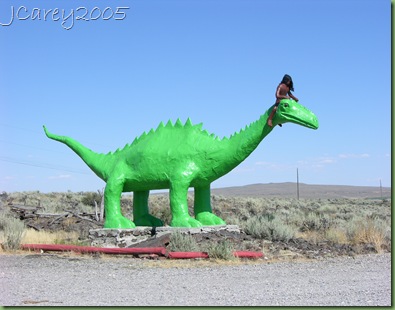There’s nothing like starting a story at the end to pique people’s interest, eh? But now I am in a bit of a dilemma. Should I go back to the beginning of my two adventures in Canada, starting in August 2005, and relate events in the chronological sequence as they occurred? Or should I just plop down somewhere in the middle of the story and go off willy–nilly as the mood strikes?
After a couple days of searching I have finally located the box within the box that holds the disc containing the photos of those early traveling days. Now it is easier to put things into some semblance resembling a chronological order. Looking back at our hundreds of digital images, it is easy to remember the current of excitement the three of us felt. For six months our anticipation surrounding the trip had built and by the time we left southern Utah we were all about to explode. JC and CO and I were finally on our way to see the 515 million year old fossils of the Burgess Shale in Yoho National Park high in the Canadian Rockies. Not many people I know (with the exception of any envious geologist I happened to tell) are even aware of what or where the Burgess Shale is. Even fewer had been to see it. But we had booked ourselves on hikes to both the Walcott Quarry and the Mt. Stephen fossil beds along with a week’s lodging in the tiny burg of Field, BC. Extraordinary geologic fun was our primary agenda!
Four days seemed a reasonable amount of time to drive 1400 miles – this would give us plenty of opportunities to see some sights along the way. On this first adventure (for there would ultimately be two) we left home in early August 2005 and quickly burned some rubber along interstates 15 and then 84, cruising first up through Utah and then on a westerly stretch in southern Idaho. We turned north at Twin Falls and looked forward to the less hectic pace of secondary roads. Soon a shady roadside picnic area beckoned and we just knew we had to stop.
In layers of rocks on the ground there can often be found an unconformity, a substantial break or gap in the geologic record where one rock layer is overlain by another that is not next in the stratigraphic sequence. For some reason there would have been a change in the deposition scenario of these rocks, a hiatus, an interruption over some considerable span of time. An unconformity generally implies uplift and erosion with subsequent loss of previously formed deposits. The result we see on the ground is that some millions of years of rock–time have disappeared from the geologic record.
Here at the picnic area we were intrigued by a mysteriously missing span of time, a stellar example of what we nicknamed The Great Idaho Unconformity.
 |






